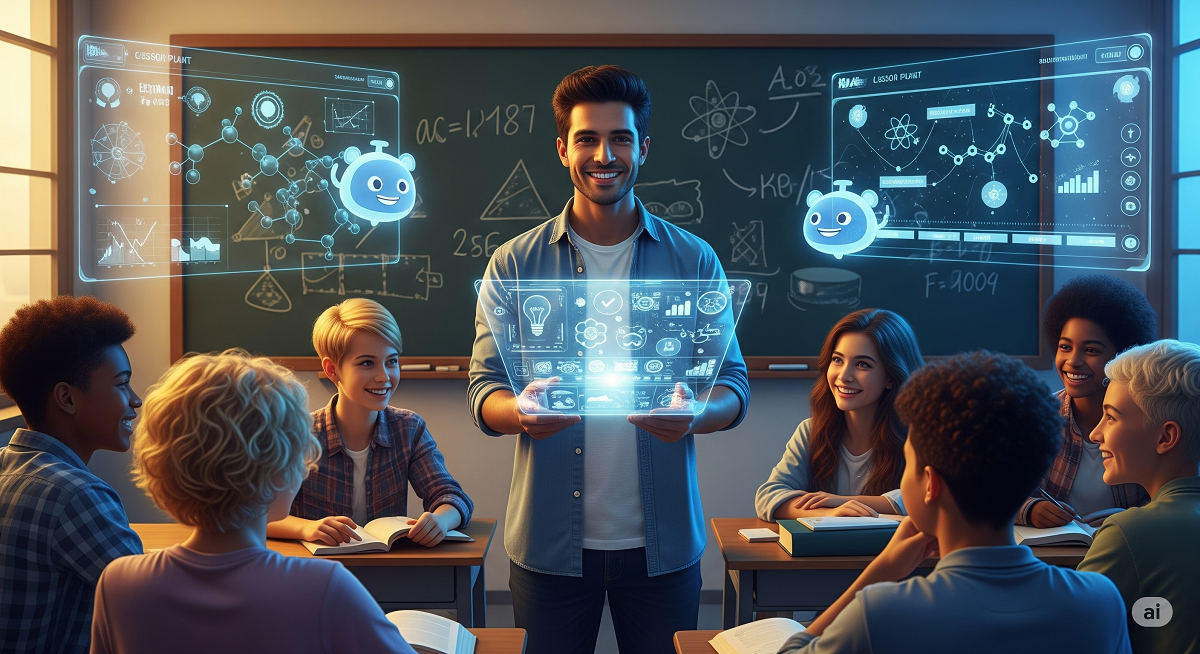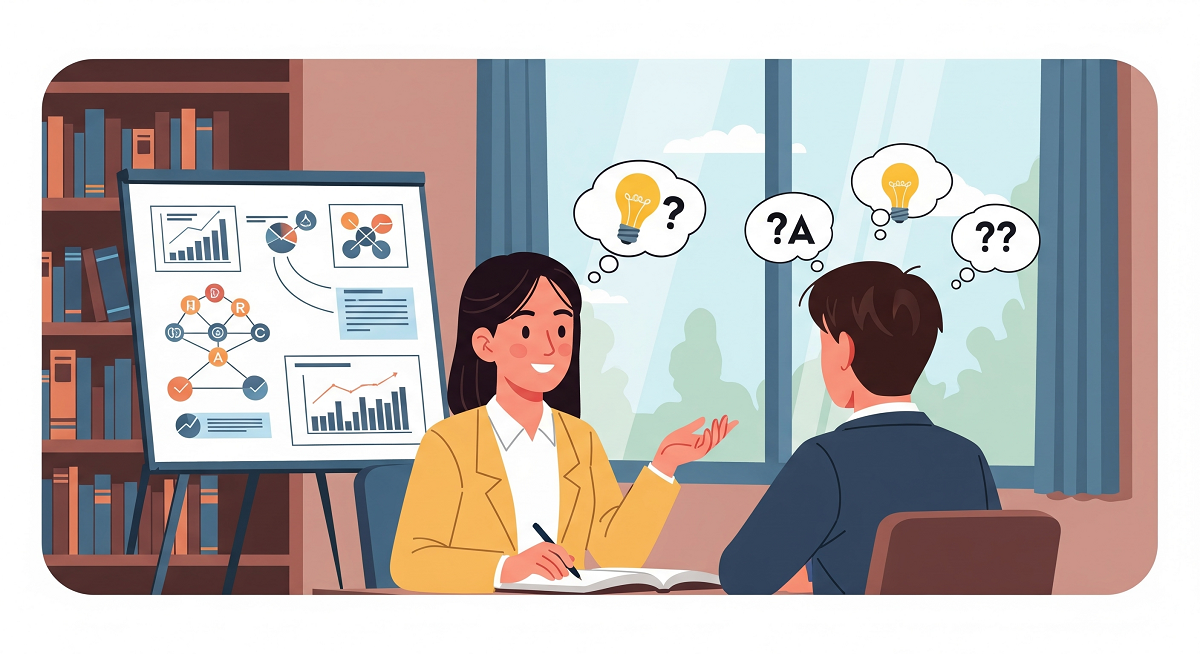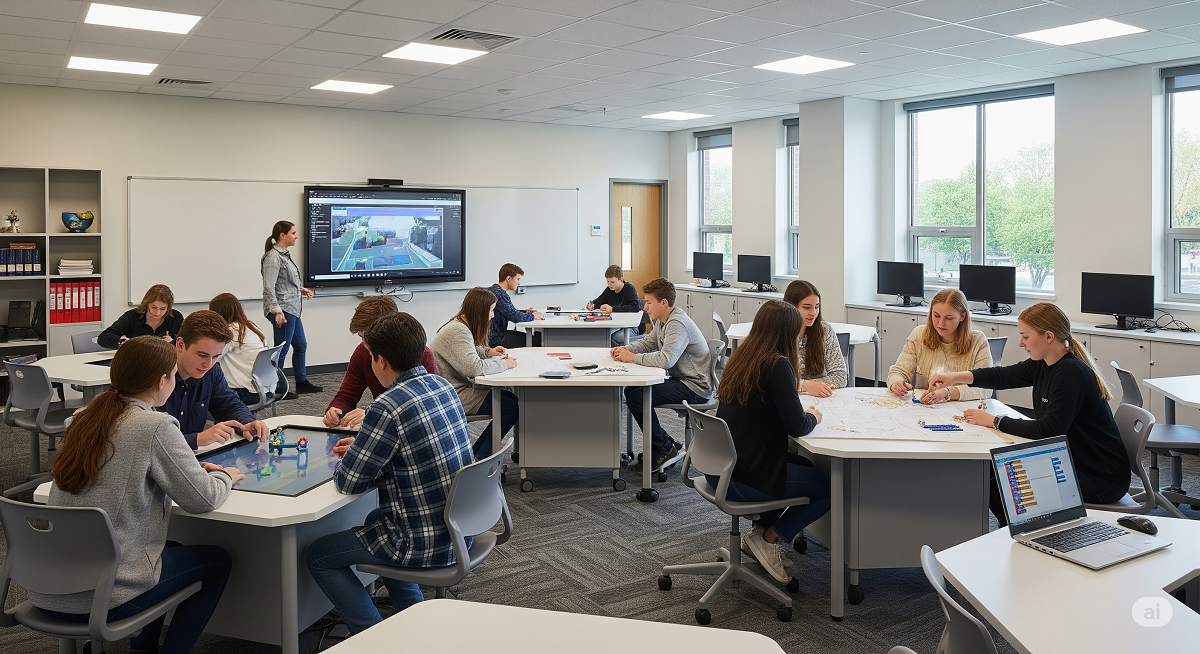How AI in Education Empowers Teachers, Not Replaces Them
Examples of using AI in Education
The rise of AI in education has sparked a mix of curiosity and concern. Some educators wonder, "Will AI take over my job?" The truth? AI isn’t replacing teachers—it’s amplifying them. Surveys like the Walton Foundation report show over half of teachers are already using AI tools, especially for tasks like lesson prep, brainstorming class activities, or simplifying tricky topics.
The Rising Trend of AI Adoption in Classrooms
According to recent data from the Walton Foundation, over 50% of educators are already leveraging AI in the classroom. It’s not just a trend—it’s a shift. The most common use cases?
-
Creating lesson plans faster
-
Explaining complex concepts simply
-
Generating visual aids or tables
-
Brainstorming new class projects
This adoption is not about replacing teachers. It’s about making their lives easier and their teaching more impactful.
Busting the Myth: AI Isn’t Replacing Teachers
Despite growing media noise, AI is not about eliminating the need for educators. In fact, AI lacks one essential thing—your contextual expertise and ability to empathize and adapt. It can't read a student's body language or understand classroom dynamics.
Think of AI as your teaching assistant—fast, helpful, but still needing supervision.
What Is Prompt Engineering—and Why Educators Should Learn It
Prompt engineering is the art of crafting a question or instruction to get a helpful response from an AI. For educators, learning this skill means being able to produce:
-
Age-appropriate content
-
Class-specific examples
-
Clear, jargon-free explanations
The most basic example of prompt engineering? Telling the AI:
"You're a high school teacher. Explain the concept of BATNA in a way a 16-year-old would understand."
Now the AI can tailor its output for your learners.
The BATNA Example – Teaching with AI Context
Let’s explore BATNA—the “Best Alternative to a Negotiated Agreement.” If you're teaching negotiation, a generic prompt may give you a wall of text that bores your students. But you can guide the AI:
-
Add student context: “My students are into sports.”
-
Include classroom tone: “You're a calm, enthusiastic teacher.”
Now the AI may say:
"Imagine your team’s game plan fails in the semi-final. What’s your next best move to win the championship? That’s your BATNA."
That’s clarity. That’s personalized AI learning.
Tailoring AI to Your Classroom Needs
AI doesn’t know your students. But you do. Add context like:
-
“Students are second-language learners.”
-
“Students struggle with abstract thinking.”
-
“Use analogies with basketball.”
These small cues help the AI shape explanations that actually land.
Accuracy in AI Responses: How to Improve It
Worried about AI giving wrong or shallow information? Boost its accuracy by:
-
Linking credible sources
-
Asking it to use a document
-
Mentioning expert names (e.g., “Maurice Switzer on BATNA”)
Also, double-check citations. You’re still the expert. Use AI as support—not the final authority.
Creating Tables and Summaries with AI
Not everything needs to be an essay. Ask AI:
“Create a table summarizing BATNA vs ZOPA.”
Boom. It presents:
| Term | Meaning | Student-Friendly Example |
|---|---|---|
| BATNA | Best backup plan | Buying another used car |
| ZOPA | Zone of possible agreement | Price range both agree on |
Prompt Techniques to Improve AI Learning Materials
Try these advanced prompt types:
-
Chain-of-thought prompting: Ask AI to “think aloud” before answering.
-
Few-shot prompting: Provide 1-3 examples of the kind of response you want.
You’ll be surprised how well it adapts.
Why Teachers Have a Unique Advantage with AI
Teachers are natural prompt engineers:
-
You understand your students’ needs
-
You know how to break concepts down
-
You know how to rephrase on the fly
That makes you the best person to guide AI into being a better classroom assistant.
AI Is a Teaching Partner, Not a Threat
One teacher shared how AI fumbled a pricing problem—until a student explained it the way the teacher taught it in class. After that, the AI nailed the explanation.
Teachers don’t just consume AI. They train it by how they prompt it.
Practical Ways to Integrate AI Today
Start small:
-
Write lesson summaries
-
Generate practice quizzes
-
Reword textbook definitions
-
Create visual aids or analogies
Let AI handle the grunt work so you can focus on impact.
Tools and Resources for Educators New to AI
Here are some beginner-friendly tools:
-
ChatGPT (OpenAI) – Best for prompts and content
-
Perplexity.ai – Verified answers + citation support
-
MagicSchool.ai – Built just for teachers
Addressing Concerns: Bias, Hallucinations, and Trust
Yes, AI can make mistakes. That’s why your expert eye matters most. Never use AI blindly. Always proofread, fact-check, and adapt it to your context.
The Future of Teaching with AI
The future? Personalized, adaptive learning paths.
With your input and AI’s scale, education becomes more human—not less.
Conclusion: Embrace AI as Your Classroom Ally
AI in education isn’t a threat—it’s a tool for teacher empowerment.
When used wisely, it frees up your time, enhances student understanding, and helps you focus on what matters: teaching, mentoring, and inspiring.
FAQs
Q1: What is the best way to start using AI as a teacher?
Start with lesson planning and prompt-based explanations. Keep it simple and experiment.
Q2: Can AI replace teaching jobs?
No. AI lacks emotional intelligence, student rapport, and contextual understanding.
Q3: How can I prompt AI to fit my class?
Add context about your teaching style, student level, and learning environment.
Q4: Are AI tools safe for students?
When used under teacher guidance, yes. Avoid using AI-generated content unsupervised.
Q5: Which AI tools are best for educators?
ChatGPT, MagicSchool.ai, and Perplexity.ai are excellent starting points.
Q6: How do I teach students to use AI responsibly?
Incorporate digital literacy and prompt critique into lessons. Teach evaluation.








